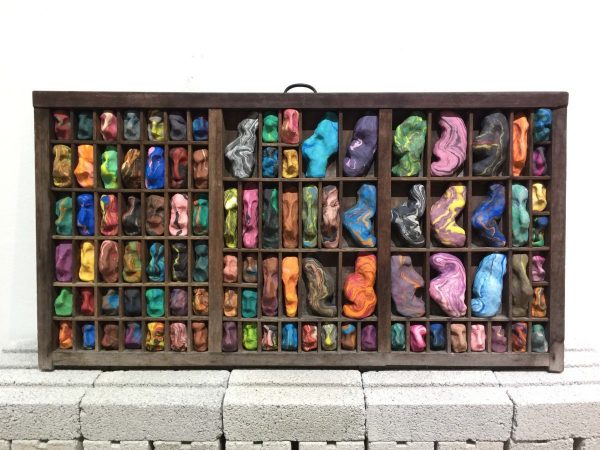





Exhibition
Traces of Bicameralism
Jacky Cheng, Lisa Foo
5 – 20 January 2019
There has been continuous questioning on the two ends of the same yardstick: shall one randomly apply pigments on a panel and call it art? And does one do the same thing repeatedly and call it art?
Not all art can be explained and justified. Many find art difficult to accept when an artist’s explanation is dissatisfactory to their understanding, much worse when they learnt that some works were seemingly created with minimal amount of thinking, in absolute opposition to, for instance, the painstakingly calibrated hyperrealist paintings. Nevertheless, this exhibition aims at re-examining the possibility of the underlying human ability in extracting sub-conscious thoughts and relegating them into the creation.
Hypothesising that human minds had operated in two parts, one of which speaks while the other listens and obeys, American psychologist Julian Jaynes ascribed ancient people’s hallucination of “God’s” apparition and oration to the bicameral activity of our human brain. This radical hypothesis ignites the interest in many of us – thus, is it that difficult to accept artists’ whose creation flows out from subconscious mind? Either in the form of a spontaneous or systemic patent, and be legitimised as a fraction of their inner voice? When one’s life experience has internalised into one’s consciousness and volition, his creation shall be interpreted as the ‘distillate’ of his brain activity.
When cognitive experience, memories and preference lateralise into the being, the bicameral process takes place to command the creation. Therefore to question the choice of material, colour or even strokes is a vain attempt to comprehend the works. Sensory output relating to cycles of life in microbial scale and larger symmetry are part of Jacky’s and Lisa’s forte, both graduate architects who have extended their enthusiasm into the study of aesthetics and form, each posing different questions and venturing into unique directions with their approach and refinement into the meaning of fine art.
Lisa is engrossed in the idea of impermanence whereas Jacky recces the terrains and slopes in search of newer forms. One assembles as the other painstakingly cut and incise patterns on paper. Their styles are unique, their perseverance remarkable and an inspiration to those who found great lessons in their endeavours.
Thus it can be concluded that the frontiers of art are not limited to the canvas and the vast inner universe is an open source of inspiration for those who managed to look beyond its incongruity to recognise the underlying beauty and indulge one’s practice on.
News & Articles
